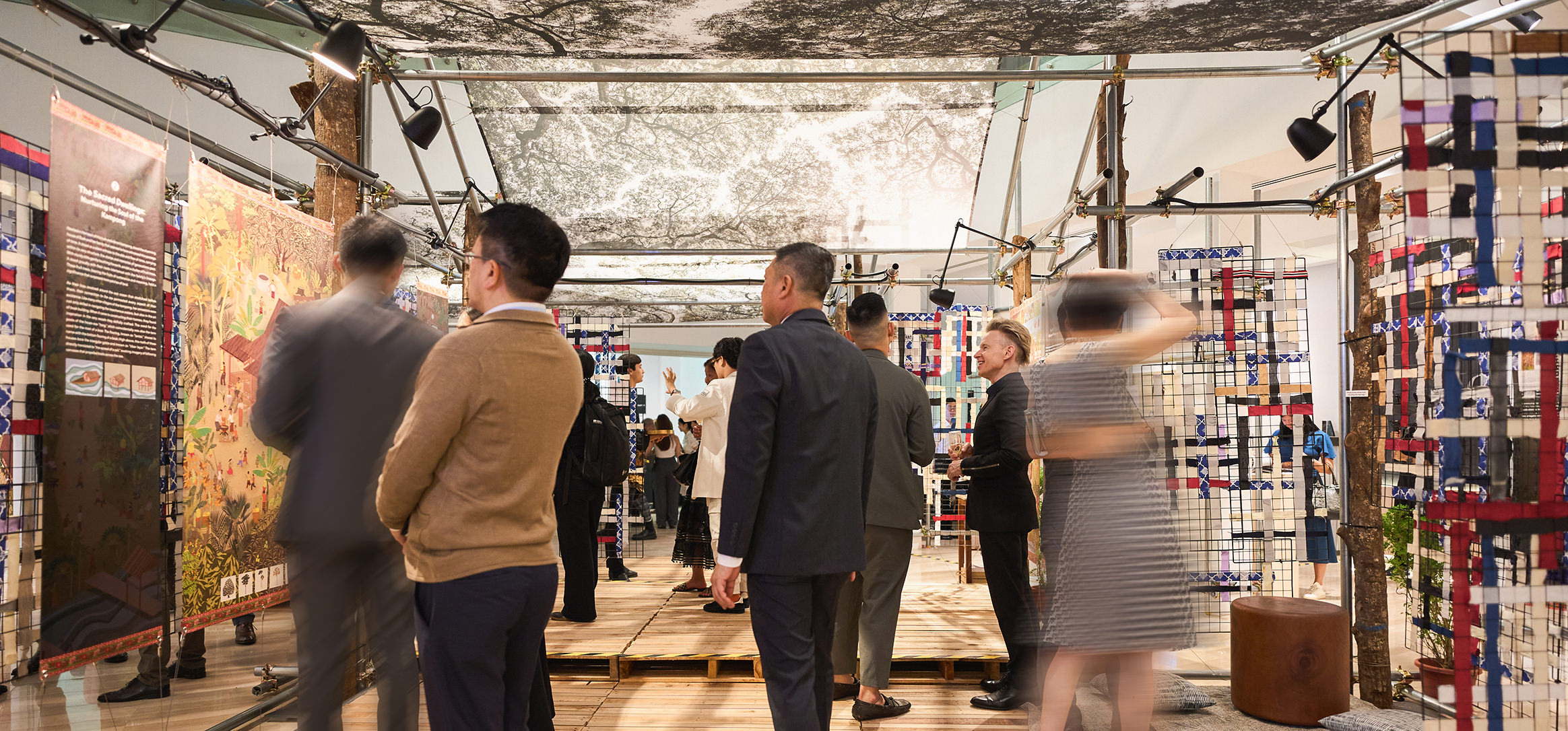
THE LOST CITIES SERIES:
Kampong Port Cities of
the Pre-colonial Era
Monday to Sunday: 10AM – 6PM
Fort Canning Centre, Singapore
Patron of the Singapore Night Festival 2023
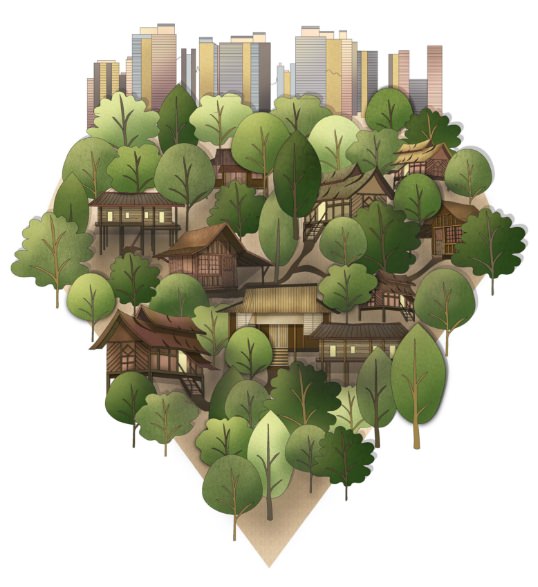
Imagine a bustling metropolis where the value of trees surpasses that of land, home to a society that grants equal rights to all genders; where the air is filled with a multitude of foreign languages spoken by travellers from far-flung corners of the globe, where wealth is cultivated through the pursuit of knowledge rather than the accumulation of material possessions. The beating heart of the Kampong is a grand marketplace teeming with exquisite treasures from Japan, China, India, Burma, the Arabian Gulf and Venice.
Curated by The Oval Partnership and a team of multidisciplinary artists, the Lost Cities Exhibition immerses you in a reimagining of Kampong Cities of 14th-century Southeast Asia. Guided by the visionary female Chief Esah, experience a fictional tale of sustainable culture and livelihoods set in the pre-colonial era, and unearth wisdom rooted in real history for the continued development of our modern society.
Zone A: Past
Embark on an exploration of a thriving society in harmony with the natural world.
Experience the distinctive perspective offered by this tale and witness the remarkable achievements of a community that has unlocked the secrets of resilience.
Zone B: Present
Kampongs once inhabited lush green pockets of land in Singapore, and in the 14th century, thrived from trade with neighbouring ports in the region. Rapid urbanisation led to the demolition of many, leaving only a few like Kampong Buangkok and Pulau Ubin still standing.
The sustainable practices deeply ingrained in the Kampong culture are inspiration for today’s housing estates and net-zero buildings.
Zone C: Future
In collaboration with multidisciplinary artists Giles Massot, Marc Nair and Zen Teh, discover three stunning art pieces that are a documentation of the Kampong heritage as well as a vision for their future. The spirit of Kampong lives on.

 Main Entrance
Main Entrance 
Virtual Exhibit
No need to worry if you are unable to visit our exhibit in-person – Explore a 360-degree rendering of our Kampong Port Cities of the Pre-colonial Era exhibit in Fort Canning Centre from your device. We recommend touring our virtual exhibit on a computer screen for the best viewing experience.
Virtual Exhibit
No need to worry if you are unable to visit our exhibit in-person – Explore a 360-degree rendering of our Kampong Port Cities of the Pre-colonial Era exhibit in Fort Canning Centre from your device. We recommend touring our virtual exhibit on a computer screen for the best viewing experience.
Artists
An essential component of our exhibit is about reinterpreting the kampong for our contemporary society. We have tapped into a trio of talented artists for their ideas. These stunning pieces are about kampong’s heritage as well as vision for their future.
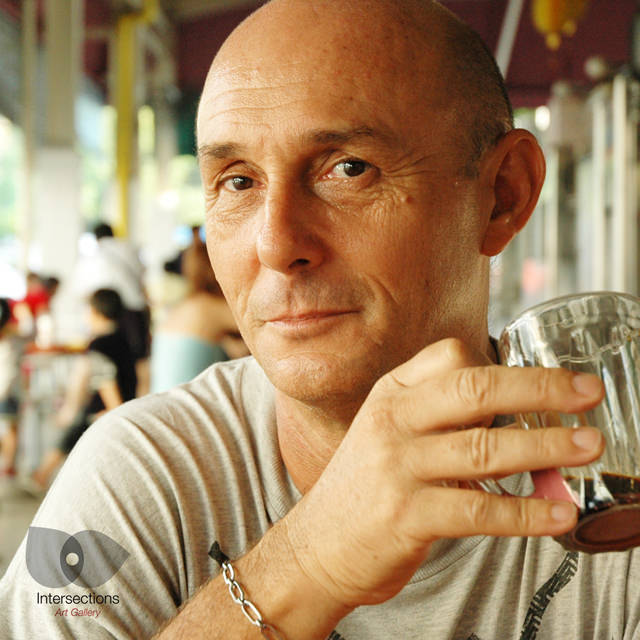
The Ulu Track
By Gilles Massot
These images of Singapore kampongs were taken in the last four decades using photography techniques that were hallmarks of their times.
The first series was shot in 1984 and is a black-and-white film photograph of a kampong house among rubber trees in Ulu Sembawang. The hand tinted version was part of my first exhibition in Singapore, Singapore from BW to C in 1985.
The second series was shot in the late 1990s with colour slides, a documentation of the fast-disappearing kampongs of Woodlands against the onset of urban transformation. They feature in my 2021 book Things I Remember.
The last series, shot in 2009, is a digital documentation of Kampung Buangkok, which was identified as the last kampong in Singapore. These images had remained in my archives up to now. These series document the evolution of Singapore in parallel to the development of photographic technology through the ages.
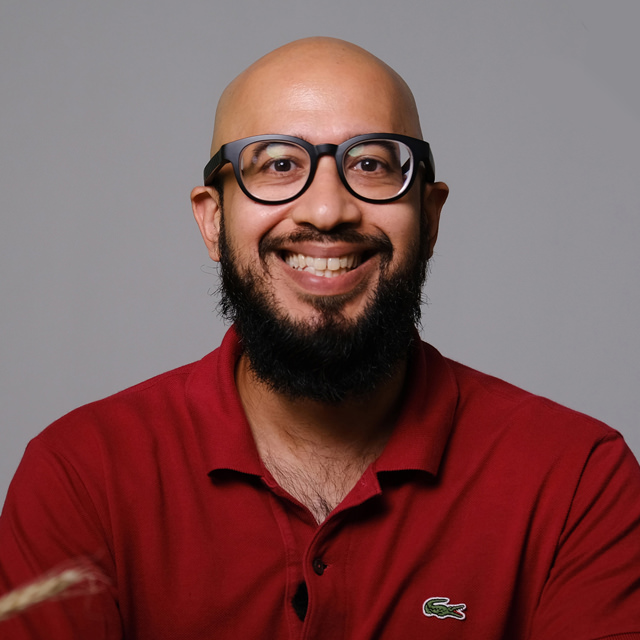
Gotong Royong – Kampung Gelam
By Marc Nair
"Gotong royong" is a Malay phrase meaning “mutual assistance”, describing a voluntary act of community preservation, and can also be understood as kampong spirit.
Today, this phrase has become politicised and is often bandied about in an effort to harken back to a more communal ethos, which is something that was inevitably lost in the wake of modernisation. The poem is a conglomeration of scenes and memories of what Kampung Gelam was, writing not from the perspective of nostalgia, but instead offering another way of seeing and remembering.
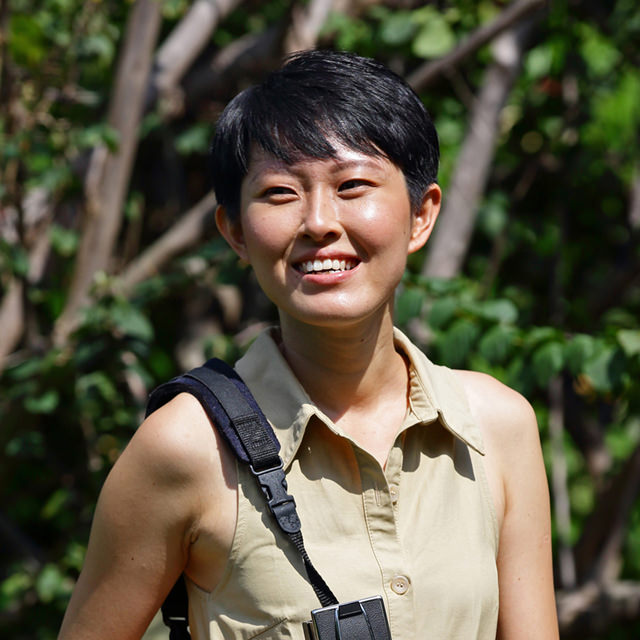
Garden State Palimpsest
By Zen Teh
Garden State Palimpsest explores Singapore’s constantly changing landscape and its residents’ relationship with the land. The photographic sculptures are handmade using image layering methods onto interior finishing materials, which are mostly varieties of granite and marble. The images on the photographic sculptures are based on interpretations on interviews with previous kampong dwellers. This series of artworks is part of a collection of works made in collaboration with Architectural Researcher, Nicole Teh.
Oval Partnership: Curator
The Lost Cities Exhibition immerses you in the Kampong Cities of 14th-century Southeast Asia, where trees are valued above land and knowledge is the key to wealth. This egalitarian society grants equal rights to women and features a bustling marketplace filled with treasures from around the world. Discover the history of this sustainable culture, which still resonates in modern-day Singapore, and witness a previously unknown world brought to light for the first time.
Our Site Visits to Kampong
In May, Oval Partnership's UK Resident Director, Jonathan Pile, and Dr. Chloe Lai, the founder of non-profit Urban Diary, conducted a joint photography and storytelling workshop for Oval team and students from various Singapore universities. The trip was to Pulau Ubin and Lorong Buangkok — the two earliest settlements in Singapore, and now the last two kampongs — that currently sit at a crossroads between development and conservation.
Unseen and oft forgotten, kampongs are in fact the most well-preserved hidden gems of Singapore, untouched by urbanisation and therefore remaining as unique sanctuaries of rich history, lush greenery, and diverse biodiversity. These kampong communities are currently inhabited by no more than 30 families. Our visit was warmly received, as residents welcomed us into their homes and sat with us for interviews, photos and meals together. The authenticity and charm of kampongs is one that cannot be found anywhere else on Singapore.
This priceless opportunity afforded us a first-hand experience into the vibrant and sustainable ways of life lead by kampong dwellers. Inspired by their generosity and wisdom, we hope to continue telling their stories and to do our part in preserving this invaluable piece of heritage — the cultural jewel known as the kampong — through efforts such as this exhibit and beyond.
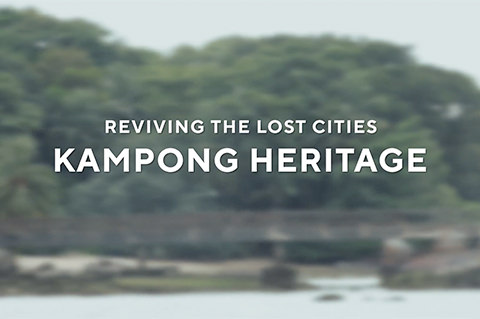






Our Site Visits to Kampong
In May, Oval Partnership's UK Resident Director, Jonathan Pile, and Dr. Chloe Lai, the founder of non-profit Urban Diary, conducted a joint photography and storytelling workshop for Oval team and students from various Singapore universities. The trip was to Pulau Ubin and Lorong Buangkok — the two earliest settlements in Singapore, and now the last two kampongs — that currently sit at a crossroads between development and conservation.
Unseen and oft forgotten, kampongs are in fact the most well-preserved hidden gems of Singapore, untouched by urbanisation and therefore remaining as unique sanctuaries of rich history, lush greenery, and diverse biodiversity. These kampong communities are currently inhabited by no more than 30 families. Our visit was warmly received, as residents welcomed us into their homes and sat with us for interviews, photos and meals together. The authenticity and charm of kampongs is one that cannot be found anywhere else on Singapore.
This priceless opportunity afforded us a first-hand experience into the vibrant and sustainable ways of life lead by kampong dwellers. Inspired by their generosity and wisdom, we hope to continue telling their stories and to do our part in preserving this invaluable piece of heritage — the cultural jewel known as the kampong — through efforts such as this exhibit and beyond.







Design Process
As part of our sustainability mission, it was imperative that our exhibit had minimal carbon footprint. To achieve this, we looked to local sourcing and material reuse in cooperation with universities, private SMEs and other non-profits organisations in Singapore dedicated to the same cause.
We developed props for our exhibit using fallen tree logs, scaffolding, and recycled wooden pallets. Giving a second life to these materials added a touch of raw and exposed aesthetic to our set, through means that also managed to be environmentally conscious.
In collaboration with Roger&Sons, a family of ethical woodmakers and furniture manufacturers, we sourced salvaged trees via their Local Tree Project to design the Kampong Pavilion of our exhibit. According to their market study, approximately 13,000 trees will be felled in the next 13 years for unceasing urban development; simultaneously, the city sits upon stockpiles of discarded logs in its sawmills. Instead of letting the logs go to rot, there exists opportunities to completely eliminate waste by utilising every part of the logs as fertiliser, packaging and others.
The use of these logs in our exhibition also highlights the changing perception of wood’s value over time. Once an important resource in the 14th century, where they were used to protect and feed communities; to their current predicament as obstructions in land development and subsequent objects of waste — and to their future, as footholds to a circular and more environmentally-conscious society.
Panel Discussion & Exhibit Opening
On August 16, The Oval Partnership organised a panel discussion to the theme of '14th Century Kampong Cities – New Paradigm for Sustainable Cities?' at Fort Canning Centre, inviting three distinguished guests to speak to over 100 attendees. They were Dr. Barnabas Calder, specialising in the relationship between architecture and energy throughout human history; Mr. Clement Onn, on the topic of trading networks; and Dr. Johannes Widodo, who spoke at length about the contemporary implementation of Kampong architectural design.
This engaging and insightful panel shared profound insights derived from authentic historical records and their applicability towards the development of our contemporary civilisation – a topic that ties back to what we were seeking to uncover in our Lost Cities exhibit.
Our exhibit will remain on display from August 18 to October 1, and is not to be missed.







Panel Discussion & Exhibit Opening
On August 16, The Oval Partnership organised a panel discussion to the theme of '14th Century Kampong Cities – New Paradigm for Sustainable Cities?' at Fort Canning Centre, inviting three distinguished guests to speak to over 100 attendees. They were Dr. Barnabas Calder, specialising in the relationship between architecture and energy throughout human history; Mr. Clement Onn, on the topic of trading networks; and Dr. Johannes Widodo, who spoke at length about the contemporary implementation of Kampong architectural design.
This engaging and insightful panel shared profound insights derived from authentic historical records and their applicability towards the development of our contemporary civilisation – a topic that ties back to what we were seeking to uncover in our Lost Cities exhibit.
Our exhibit will remain on display from August 18 to October 1, and is not to be missed.







